Filipino Street Food – are you hungry?
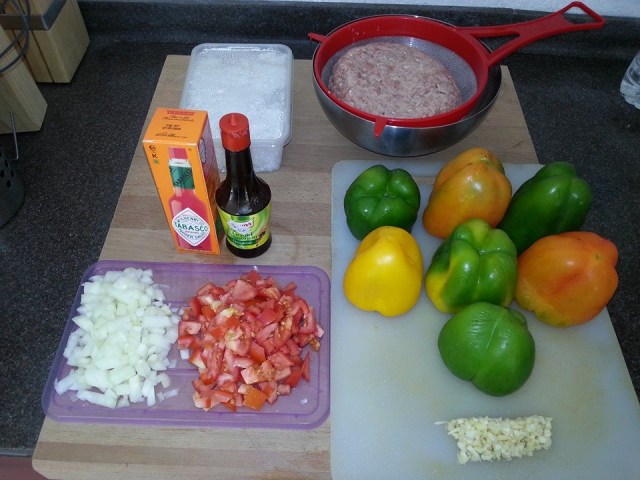
A blog entry has gone viral in the Philippines: “I Would Rather Go Hungry Than Eat Filipino Street Food Again!” Agness and Cez, from Poland are currently traveling through Asia and are at this very moment in the Philippines. They live without permanent home and for under 25 USD a day, since 2011. The blog entry is from March 17.
In many points I have to agree with them – it is not easy to find good or even excellent Filipino food. But it exists! My butch is preparing outstanding Filipino food. She is experimenting with combinations and ingredients. Filipinos and westerners go nuts when they taste her food. Below are some recent menus:

Preparation of stuffed bell-pepper
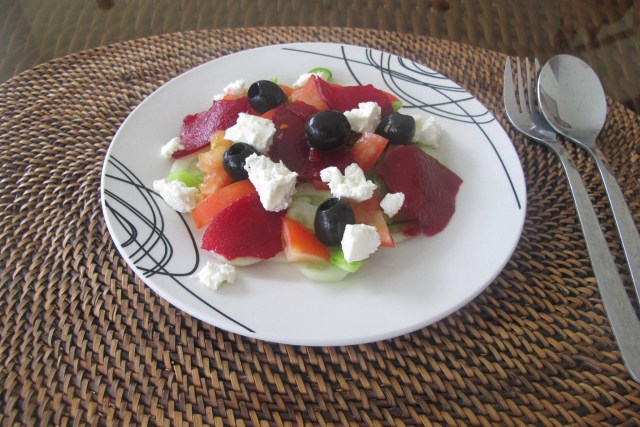
A Mediterranean salad with cucumbers, olives, tomatoes, beetroot and feta cheese.
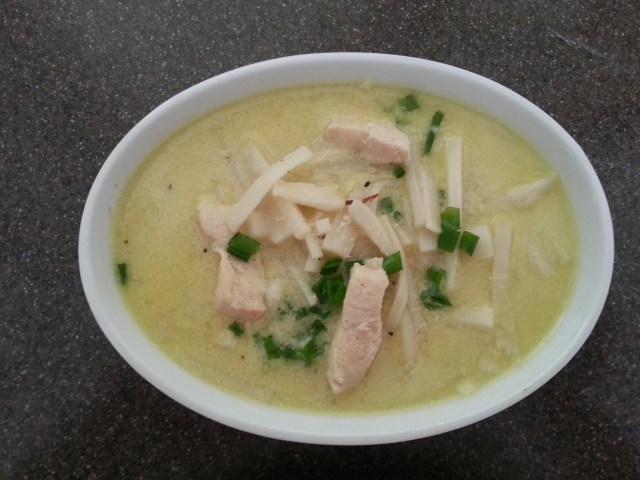
A spicy tom yam soup with chicken breast, bamboo sprouts, lemon grass and coconut milk.
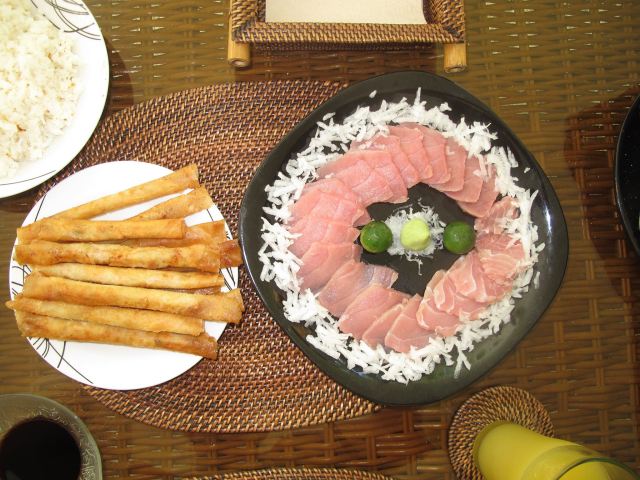
Tuna sashimi with horse radish. Vegetable spring-rolls and garlic rice.
[GARD]
In these pictures you see 3 of the major differences to what you find in the street eateries and carenderias.
Vegetables:
Vegetables are very expensive in the Philippines and therefore are nearly not found in the common menus. The standard quality of vegetables is also far below the quality westerners are used to. The bell-peppers in the first menu are not local. The bell-pepper we find in Camiguin are very small and have a skin that is extremely hard and cannot been digested. Good vegetable can only grow in the highlands at 500 meters and more above sea-level.
Quality:
The quality of local rice is far below the standard in India, Vietnam or Thailand. Its nutrition value is extremely low. This is why Filipinos are so greedy for fat in any form, they eagerly need the nutrients. Filipinos eat about 5 or 6 times per day because their food fills the belly but does not contain enough energy. One can find good quality. But this search needs a lot of time and patience. One has to go very early to the local market (5:00 a.m. is OK), check all the boots, chat with the vendors to find the pearls.
Presentation:
Rural and working Filipinos do not eat for their pleasure, they need the food to survive. Butchers do not learn their business in a 3 years professional training. This is why most of them do not know how to cut meat correctly. A heavy bolo does the job. I do not like to have my fingers constantly in the mouth to fish for bone splinters. This is why we buy meat always in entire pieces and cut them ourselves. Optical effects in the Filipino cuisine are mostly limited to colors or in other words: ketchup, ube (yam), and artificial colors.
Another reason is that westerners are rather used to the French or Italian style serving one dish after the other. Filipinos bring everything at the same time on the table. One can see Pinoys happily eating french fries with vanilla ice-cream.
To finish, I show you my all time preferred dish: Kinilaw.
[GARD]
To Agness and Cez I only can say: There are people who do always the wrong thing in the wrong place at the wrong moment.
Agness wrote:
The fruits we bought at local markets daily looked and tasted old and gross. Bananas (they changed color into black) were the worst (you could see some flies flying around and sitting on the bunch of them). Apples were tiny, oranges and nectarines were extremely sour and pineapples were soaked in some kind of liquid that smelled bad. The only good fruits available there were sour mangoes sold with pepper and sugar as well as watermelons.
I say: There are 28 kinds of bananas growing in the Philippines. You were definitely to late on the market, when the bananas were all black and the flies were sitting on them. Apples, oranges and nectarines aren’t indigenous fruits of the Philippines. Pineapples one always has to buy as whole fruit.
Agness wrote:
No wonder why, in the north, the vast majority of Filipino kids and young people are overweight. This is something we have noticed straight away. People in young age are huge and it’s due to poor quality of food.
I say: Not only in the north. Anywhere in large towns and cities where you find American fast food, the local population suffers of the American overweight syndrome.I recently had been shocked to see 250 pounds Thai girls in Bangkok eating a Big M….
And Agness is a bit too much generalizing. She’s now in the Philippines for a few days and writes “the vast majority of Filipino kids …”.
Agness wrote:
On the other hand, if you wanted to eat something healthy and more Western (brown bread, brown rice, cooked veggies, yogurt, grilled or steamed fish, oatmeal, dried fruits, etc.) you had to pay a lot of money (more than you would pay in your own country).
I say: “Healthy and more Western” do not go together except you live in a remote place in the west, where you do not get the industrial food. Some catchwords: Genetically manipulated cereals, antibiotics soaked meat, artificial flavors and more.
Yogurt and other milk products are not common in the Philippines, they are imported. Asian people may have problems to digest milk. Oatmeal also has nothing to do with Asian cuisine.
Agness wrote:
The biggest disappointment was not trying traditional Filipino dishes. Why? We simply could not find them! We visited enormous amount of local food stands and restaurants asking for balut, adobo, asado, daing and more and we we have heard was “Not here”.
I say: When and where did you look for those Pinoy pecialties? Balut you find at any gasoline station from 5 p.m. until they close. I think, you do know why? If you could not find adobo, then you must have been asking in a church or in a museum. I rarely found an eatery that does not offer adobo. But one thing is true, a sentence I had never heard so many times as here in the Philippines: “Sorry, Out of stock, Sir”. And miraculously it is always the thing you need or want, that is out of stock.
Conclusion:
An interesting blog, the two, Agness and Cez, are writing. But when I compare it with Kaila’s Blonde Traveler, then I think, Cez and Agness should collect more experience before writing. But OK, it is their impressions.
[GARD]

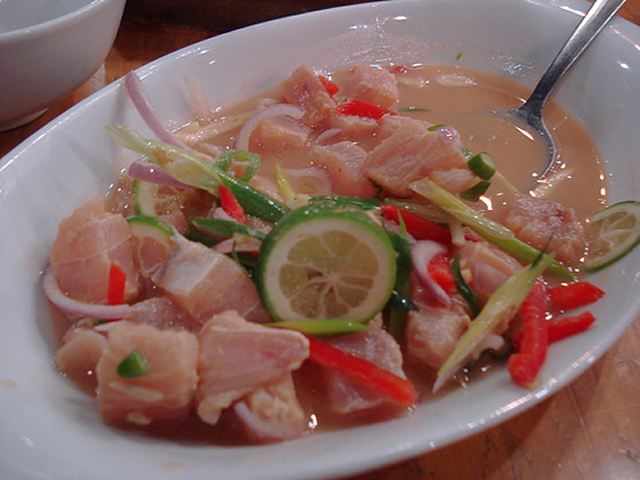









of all above pics, the only one “Filipino” dish is Kinilaw – anyway originated from South America where it is known as “civiche” – which, unfortunately, very often is “killed” with an overdose of ginger here in the Philippines……
to call Butch’s cooking “Filipino” is a sort of offense, in my humble opinion….
Love,
Phil
You’re right Phil. But first of all think of the geographical position of the Philippines. The Philippines are much like Malta, situated in the crossing of many cultures passing by. Sometimes these other cultures are just passing by, sometimes they are influencing and sometimes they are occupying. The last occupation left the worst influence …
And when you look back to Europe: Spaghetti and other pasta came from China. Coffee and potatoes came from South-America some 480 years ago. Before, Europeans had been eaters of raw meat (tartar, of course) and some burnt crops they started to call bread.
Ginger overkill: Either you like it or you hate it. Butch prepares every morning a ginger-tea. Before I get my so beloved espresso, I drink this rather spicy brewing. It gives me punch all day and the espresso then does the rest.
I showed the article to Butch before publishing. Butch is my Girardet and Bocuse in one. She invents new menus nearly every day. We have the pleasure to taste and discuss with a good glass of wine.
Haha – just got a “Fleischkäse” from Ingo. Excellent. It’s more fun in the Philippines, when you have some guys from the old continent around.
GVU
waebi
In respect to your comments about vegetables, I do not entirely concurr with you. Bell Peppers, for example, grow in our garden (Panay) without any problems, though they do net get as big as the imported ones.
Furthermore, I feel that there is an aboundance of local vegetables, such as:
– Kangkong
– Pechay
-Maluggay
-Kalabasa (Squash)
– Kondol
– Patula
-Opo
– Gabi leaves
– Ampalaya (bitter cucumber)
– Sayote
-Kamote Tops
– Sigarillas
– Langka
– Green Papaya
I am sure, that this list could be continued 🙂
Anyway – with all the above vegetables, a good variety of succulent dishes can be prepared. These local vegetables are not expensive as well.
Regards Makato
A Thai stumbled upon your blog.
I would not say anything since it’s not my business, except this comment you made which refer to my people.
…Not only in the north. Anywhere in large towns and cities where you find American fast food, the local population suffers of the American overweight syndrome.I recently had been shocked to see 250 pounds Thai girls in Bangkok eating a Big M…. >>> How many of Thai weight more than 220 pounds (100 kg.). Most Thai weight around 70-80 kg. for male with around 175 cm. Female are much more less, around 40-50 with 150-160 cm. You could search any data or come see for yourself.
So you said that …And Agness is a bit too much generalizing. She’s now in the Philippines for a few days and writes “the vast majority of Filipino kids…
You did the same thing.
I don’t care if what she said about Filipino food and Filipino it’s true, but I do know what you said about Thai is not right. Like I said, if you think I’m wrong, search for the data or see with yourself.
I would not mention anything about the issue about Filipino and that Polish blogger. It’s not my business. As the same time I would appreciate if anybody mind their own business and don’t drag others into the conflict.
LOL
Reading about your comparing to the neighbor like Thailand reminds me one thing: They say Filipino are full of crab mentality. It’s seems that they are correct.
Instead of trying to prove them wrong, what you did just proves them right.
Sterotype does not come out of thin air.